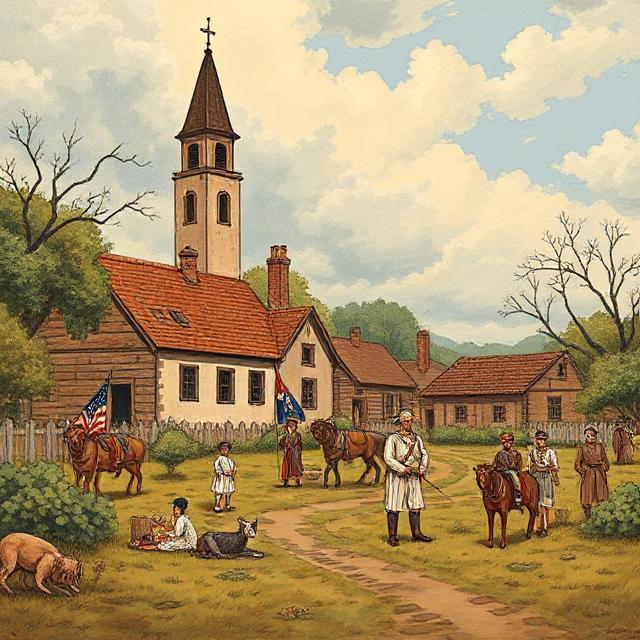The colonial history of the United States is a rich and complex narrative that spans over a century, beginning with the establishment of the first permanent European settlements in the early 17th century. This period laid the foundation for the political, social, and economic systems that would shape the future of the nation. The interactions between European settlers, Indigenous peoples, and enslaved Africans during this time created a diverse cultural landscape that influenced American identity. Understanding this era is crucial for grasping the roots of contemporary American society.
Early Exploration and Settlement

European Exploration
The era of exploration began in the late 15th century, with European powers seeking new trade routes and territories. Notably, Christopher Columbus‘s voyages in 1492, sponsored by Spain, opened the Americas to European exploration. Following Columbus, explorers such as John Cabot (1497) and Jacques Cartier (1534) ventured into North America, claiming land for England and France, respectively. These explorations were motivated by the desire for wealth, territorial expansion, and the spread of Christianity.
The Spanish Colonies
The Spanish established the first permanent European settlement in the present-day United States at St. Augustine, Florida, in 1565. This settlement served as a military outpost and a base for missionary activity among Indigenous populations. The Spanish also explored the Southwest, establishing missions and settlements in present-day New Mexico and California. Their efforts to convert Native Americans to Christianity often led to conflicts and resistance from Indigenous groups.
The English Colonization

Jamestown and the Virginia Colony
The first successful English colony was established in Jamestown, Virginia, in 1607. Funded by the Virginia Company, Jamestown faced numerous challenges, including conflicts with Indigenous peoples, disease, and food shortages. The introduction of tobacco cultivation by John Rolfe in 1612 transformed the economy, leading to the growth of plantations and an increased demand for labor. The success of tobacco farming attracted more settlers and established Virginia as a profitable colony.
The Pilgrims and Plymouth Colony
In 1620, a group of English Separatists known as the Pilgrims established the Plymouth Colony in present-day Massachusetts. They sought religious freedom and were motivated by a desire to create a community based on their Puritan beliefs. The Mayflower Compact, signed by the Pilgrims aboard the Mayflower, established a framework for self-governance and majority rule. This early form of democratic governance was significant in shaping future political structures in America.
Expansion of New England Colonies
The success of Plymouth led to the establishment of other colonies in New England, including Massachusetts Bay Colony (1630), founded by Puritans seeking to create a “city upon a hill.” The New England colonies developed a mixed economy based on agriculture, fishing, and trade. The Puritan work ethic and emphasis on education led to the establishment of schools and universities, including Harvard College in 1636. This focus on education contributed to a literate and politically engaged populace.
The Middle Colonies

Diversity and Economy
The Middle Colonies, including New York, New Jersey, Pennsylvania, and Delaware, were characterized by their ethnic and religious diversity. New Amsterdam, established by the Dutch in 1624, later became New York when the English seized control in 1664. William Penn founded Pennsylvania in 1681 as a haven for Quakers and others seeking religious freedom. The fertile land and moderate climate allowed for diverse agricultural production, including grains and livestock.
Cultural Exchange
The Middle Colonies became a melting pot of cultures, with settlers from various European backgrounds, including Germans, Dutch, and Swedes. This diversity fostered a spirit of tolerance and cooperation, which contrasted with the more rigid social structures of the Southern colonies. The presence of various religious groups led to a culture of pluralism, where different beliefs were respected and coexisted.
The Southern Colonies

Plantation Economy
The Southern Colonies, including Virginia, Maryland, North Carolina, South Carolina, and Georgia, developed a plantation-based economy that relied heavily on the labor of enslaved Africans. The cultivation of cash crops such as tobacco, rice, and indigo became the backbone of the Southern economy. The Headright System incentivized land ownership by granting land to settlers, leading to the establishment of large plantations that required significant labor forces.
The Role of Slavery
The demand for labor in the Southern colonies led to the forced importation of enslaved Africans. The Triangular Trade facilitated the transport of enslaved individuals from Africa to the Americas, where they worked under brutal conditions. The legal framework for slavery was codified in colonial laws, creating a system of racial hierarchy that would have lasting implications. Enslaved Africans contributed significantly to the agricultural economy while enduring harsh living conditions and systemic oppression.
Relations with Indigenous Peoples
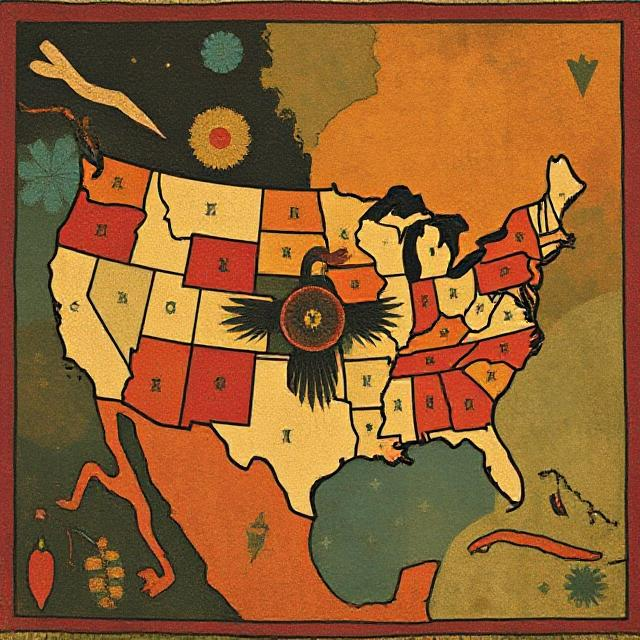
Conflict and Cooperation
The arrival of European settlers had profound effects on Indigenous populations. Initial interactions varied from trade and cooperation to conflict and violence. Notable conflicts include the Pequot War (1636-1638) in New England and King Philip’s War (1675-1676), which resulted in significant loss of life and territory for Indigenous peoples. These conflicts were fueled by competition for land and resources, as well as cultural misunderstandings.
Treaties and Land Dispossession
As colonies expanded, treaties were often made and broken, leading to the dispossession of Indigenous lands. The Iroquois Confederacy and other tribes attempted to navigate the complex relationships with European powers, often playing them against one another to protect their interests. The gradual encroachment of settlers led to the displacement of Indigenous communities and the erosion of their traditional ways of life.
Colonial Governance and Society
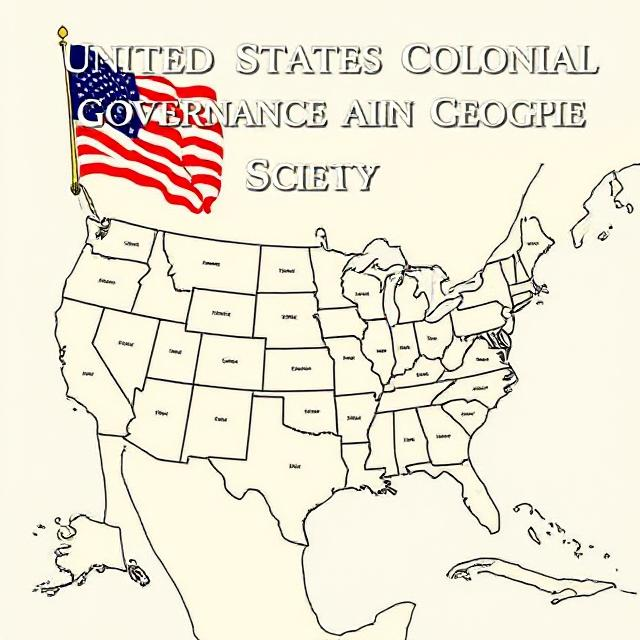
Colonial Governments
Each colony developed its own system of governance, influenced by the political structures of England. Most colonies had a governor appointed by the crown or a proprietary owner, alongside elected assemblies that represented colonial interests. This early form of self-governance laid the groundwork for future democratic principles. The establishment of town meetings in New England further encouraged local participation in governance.
Social Hierarchies
Colonial society was marked by social stratification. In the Southern colonies, the plantation elite held significant power and wealth, while poor white farmers and enslaved Africans occupied lower social positions. In contrast, New England society was more egalitarian, with a focus on community and religious conformity. The presence of indentured servants and free blacks added complexity to the social hierarchy, as their status varied based on labor agreements and legal rights.
Religion and Culture
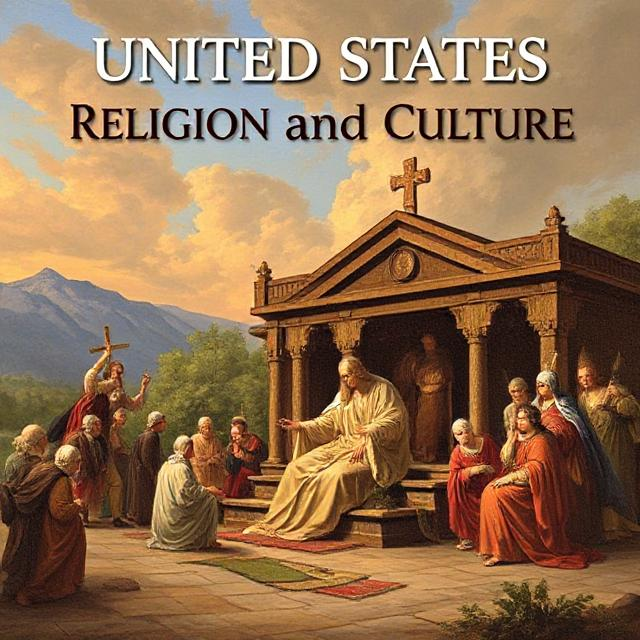
Religious Diversity
Religion played a crucial role in colonial life. The New England colonies were predominantly Puritan, while the Middle Colonies embraced a variety of faiths, including Quakerism, Lutheranism, and Catholicism. The Southern colonies were more Anglican, reflecting the influence of the Church of England. Religious dissenters often faced persecution, leading to the establishment of colonies like Rhode Island, founded by Roger Williams as a refuge for those seeking religious freedom.
The Great Awakening
The First Great Awakening (1730s-1740s) was a religious revival that swept through the colonies, emphasizing personal faith and emotional experiences. Preachers like Jonathan Edwards and George Whitefield encouraged a more individualistic approach to religion, challenging established denominations and promoting a sense of shared American identity. This movement fostered a spirit of questioning authority and contributed to the development of new religious sects.
Colonial Conflicts and Tensions
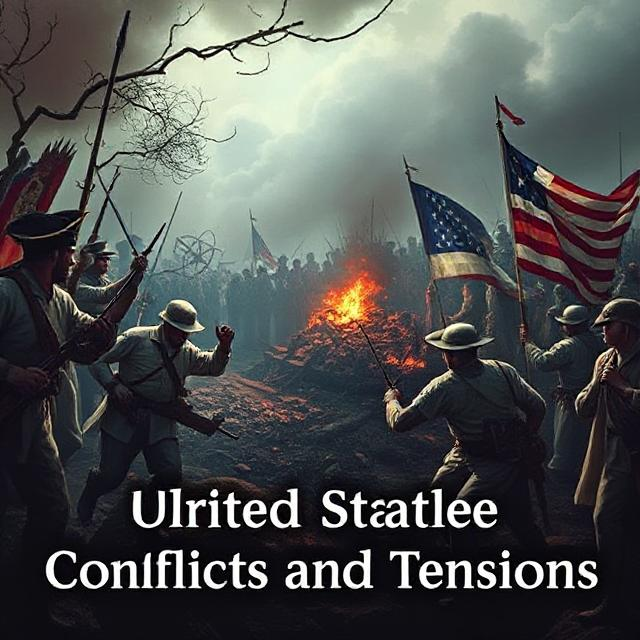
French and Indian War
The French and Indian War (1754-1763) was a pivotal conflict between British and French colonial powers, with Indigenous allies on both sides. The war resulted in British victory but left Britain deeply in debt. To recover costs, Britain imposed taxes on the colonies, leading to growing discontent. The war also altered the balance of power in North America, as France ceded significant territories to Britain.
Rising Tensions
Colonial resistance to British taxation, exemplified by events such as the Boston Tea Party (1773), escalated tensions. The imposition of the Stamp Act (1765) and the Townshend Acts (1767) fueled calls for greater autonomy and representation, laying the groundwork for the American Revolution. The slogan “No taxation without representation” became a rallying cry for colonists who felt their rights were being violated.
Conclusion
The colonial history of the United States is characterized by a tapestry of cultures, economies, and conflicts. The interactions between European settlers, Indigenous peoples, and enslaved Africans shaped the social and political landscape of the emerging nation. As the colonies evolved, they laid the foundations for the principles of democracy, liberty, and equality that would later define the United States. Understanding this complex history is essential for comprehending the challenges and triumphs that continue to influence American society today.


